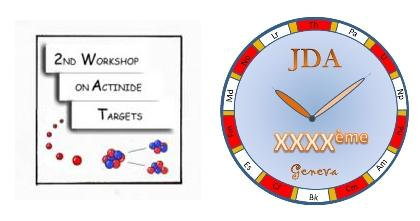Speaker
Dr
Thomas Scott
(University of Bristol)
Description
Experimental surrogates for Plutonium may provide an effective means to help understand and model some of the many complex metallurgical issues concerning material. Cerium, located in the lanthanide family of the periodic table, is considered to be a non-radioactive surrogate of Pu because of the several similarities between the two metals including similar crystal structures (fcc), multiple allotropic forms, large volume changes associated with phase transformations, pressure–melting temperature dependence, unusually low melting temperatures (Ce = 798°C, Pu = 640°C), formation of asymmetric crystal structures, similarity in electronic configurations and the itinerancy of f electrons, and their alloys exhibit solid-state microsegregation (Ce–La and Pu–Ga). This connection defines a foundation for the use of Ce as a surrogate for Pu.
Electron back-scattered diffraction (EBSD) orientation mapping has proven to be a valuable microstructural characterization technique for understanding phase transformations, texture, orientation relationships, grain-boundary character distribution, phase identification, etc., for pure metals and alloys (Schwartz et al. 2000). However, owing to its extreme surface reactivity, EBSD analysis of pure Cerium has only been reported on one occasion (Farr et al 2003). This current work represents the first successful attempt to obtain EBSD patterns and orientation maps of Ce-La5 alloy. Initial data were generated using a combined ion-electron beam system, where ion milling and EBSD mapping were preformed EBSP in situ. For subsequent samples surface preparation by ion milling was performed in a focused ion beam (FIB) system and the sample was briefly transferred through air for analysis in a separate secondary electron microscope (SEM) fitted with EBSD instrumentation.
Author
Dr
Thomas Scott
(University of Bristol)
Co-authors
Dr
Charles Younes
(University of Bristol)
Dr
Chris Jones
(University of Bristol)
Dr
Michael Ling
(AWE, Aldermaston, UK)
Dr
Roderick Jenkins
(AWE, Aldermaston, UK)
